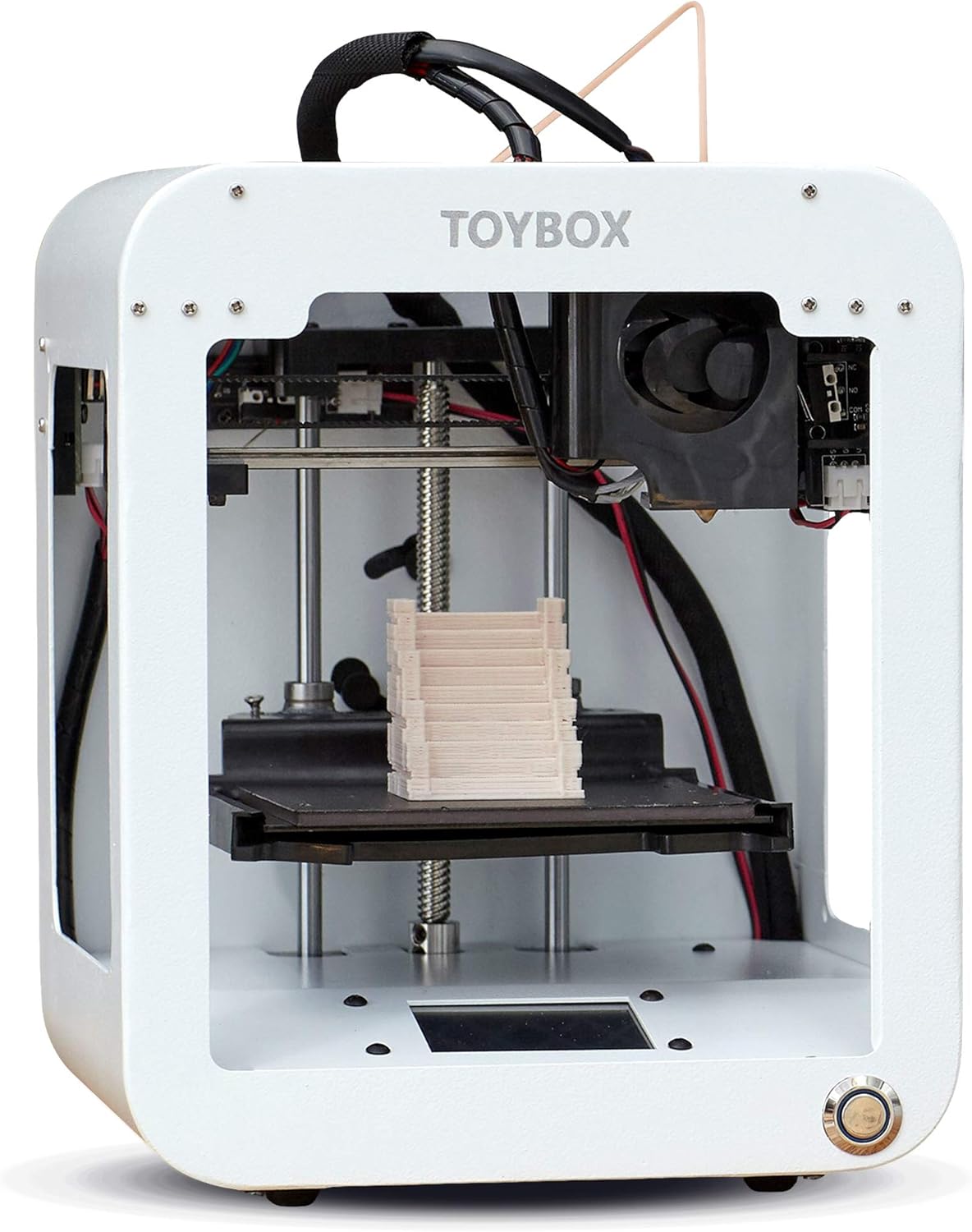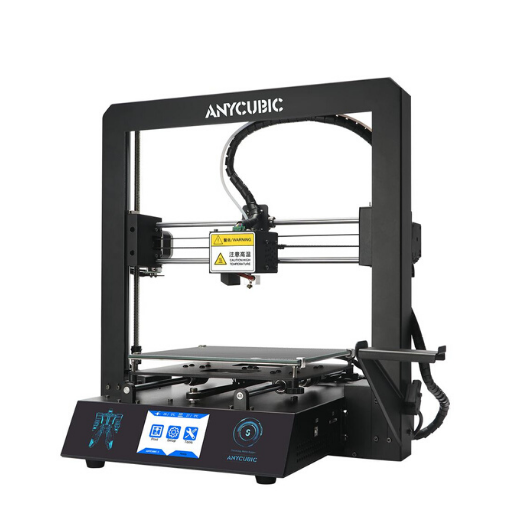Compare Toybox vs Mega S
Comparison between the best 3D printers
Choose the best 3D printer at the best price. The cheapest 3D printers are here.
Buy a 3D printer here with 3D Fila.
 |
 |
|
| Model | Toybox[BUY Toybox] |
Mega S |
| Printing Material | Filament | Filament |
| Buy Filament for Toybox Toybox | Buy Filament forAnycubic Mega S | |
| Estimated price | $299,00 | $149,00 |
| Manufacturer | Toybox | Anycubic |
| Release Year | 2024 | 2019 |
| Print Volume [mm] | 70x80x90 | 210x210x205 |
| Printer Size [mm] | 190x190x230 | 405x410x452 |
| Weight [kg] | 3 | 14,5 |
| Power Loss Recovery | NO | YES |
| Enclosed printer | NO | NO |
| Bed Leveling | Manual | Manual |
| Filament End Sensor | NO | YES |
| Bed type | Heated | |
| Power supply system | Direct Drive | Bowden |
| Standard nozzle | 0,5 | 0,4 |
| Maximum Nozzle Temperature [°C] | 210 | 260 |
| Maximum Bed Temperature [°C] | 110 | |
| Maximum printing speed [mm/s] | 60 | 100 |
| Filament holder | YES | YES |
| Camera for supervision | NO | NO |
| Recommended filaments | PLA | PLA, TPU, ABS, PETG |
| Recommended slicers | Toybox | Cura, Simplify, Slic3r |
| Maximum Resolution [mm] | 0,2 | 0,1 |
| Processor | 8 bits | |
| Display | Touchscreen 2,4'' | Touchscreen TFT 2,8'' |
| Power Supply | 12V / 300W | |
| Connectivity | Wi-fi | SD / USB |
| Operating systems | iOS, Android | Windows, Mac, Linux |
| Date of registration in the system | 2024-08-06 | 2021-04-15 |
| Release date | 2024 | 2019 |
| Extra features | The Toybox 3D printer is an excellent option for children and beginners. Easy to use, with intuitive setup and simplified operation via an app. The Toybox allows you to print thousands of toys and projects through a user-friendly interface. It has a removable magnetic table that makes it easy to remove printed objects. The filament is PLA, safe for children, and the printing is reliable and error-free. It also offers custom design options, allowing you to create and print drawings and photos. | The Anycubic Mega S offers a printing platform with excellent adhesion, easy removal after cooling. It has a filament sensor for a better experience with flexible materials and a multilingual and intuitive color touchscreen. Assembly is quick, requiring only 8 screws and 3 connections. It has a large build volume (210 x 210 x 205 mm), high positioning accuracy and supports a variety of materials, including TPU, PLA, ABS and wood. It stands out for its solid metal structure, superior stability, high-quality printing with layer resolution of up to 50 microns, Ultrabase for easy adhesion and removal of parts, resumption of printing after power outage, high-quality extruder for flexible filaments, suspended filament support and stable structure that reduces shaking, improving printing quality. |
| Support for multiple colors and materials (AMS and CFS) | NO | NO |
Notes * |
||
| Cost-benefit | 6 / 10 | 7 / 10 |
| Hardware | 0.9 / 10 | 2 / 10 |
| Tela | . | . |
| Print volume | 3 / 10 | 3 / 10 |
| Performance | 0 / 10 | 1 / 10 |
| [BUY Toybox] |
Conclusion |
| In comparing the Toybox and Anycubic Mega S 3D printers, it is clear that each model caters to different user needs and preferences. The Toybox, positioned at a higher price point, stands out as an excellent entry-level option primarily designed for children and beginners. Its user-friendly app interface, compact size, and focus on safety with PLA filaments make it appealing for family use. The Toybox emphasizes ease of operation and accessibility, especially suitable for those new to 3D printing. On the other hand, the Anycubic Mega S, which is more affordably priced, boasts a significantly larger print volume and supports a wider range of materials, including flexible and composite filaments. It also features robust construction and supports higher maximum temperatures, allowing for better printing versatility. Its power loss recovery and filament end sensor further enhance its functionality, making it a solid choice for users looking for a reliable machine for more complex projects. In conclusion, if you are looking for a straightforward, child-friendly printer with a simple setup, the Toybox is a suitable choice despite its higher cost. However, if you prefer a more versatile 3D printer with superior performance and material options at a lower price, the Anycubic Mega S emerges as the better value. Ultimately, the decision should align with the user’s experience level, intended applications, and budget considerations. |

